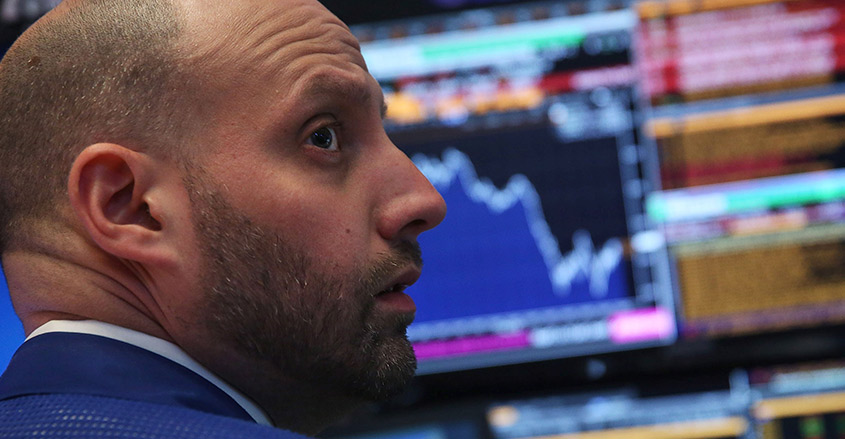The recent swings in the stock market have taken a heavy toll on investors, particularly those who were betting, some with borrowed money, that volatility would continue to remain low.
After years of market stability, investment firms began offering ETFs that allowed investors opportunities to profit from a stable stock market environment.
These funds were pegged to the CBOE Volatility Index (VIX), known in the press as the “investor fear gauge.”
The VIX index rises when volatility increases, that is, when there are spikes or precipitous movements of the S&P 500 Index of stocks.
These derivative contracts have grown in popularity the past several years as the easy money policy of the Federal Reserve led to minimal volatility across all asset classes.
“We don’t want to deny ordinary Americans the ability to trade in ways that can help them,” said Tyler Gellasch, executive director of Healthy Markets Association, a Washington-based investor advocacy group.
“At the same time, these things are very complicated, they can really blow up.”
Volatility ETFs were readily available to retail investors through discount brokerages such as E*Trade.
Yet these particular ETFs were not meant to be used as part of a buy-and-hold, long-term investment plan. An essential element of the strategy is that the products must be traded and monitored on a daily basis — a crucial factor that many unsophisticated investors failed to comprehend.
“I know people who tried to do this themselves and didn’t know it was a daily product and they bought it and stayed in it,” said Maura Griffin, chief executive officer of Blue Spark Financial, a New York-based wealth manager.
“It’s not using your intellect to determine whether something has value or not. It’s just betting on your intuition.”
Many of these products were sold on a leveraged basis, allowing retail investors to take large volatility bets for little cash up front. This strategy was profitable for many years when the S&P 500 continued to rise or remain stable.
Many investors believed the market would continue to remain placid indefinitely.
When the market fell and the volatility index increased rapidly, the losses sustained by leveraged investors were catastrophic.
Wiped out
After the markets whipsawed, some funds were wiped out. Many other firms closed their volatility index funds to avoid further losses in the new, suddenly unpredictable environment.
Although these products are high-risk and unsuitable for many inexperienced retail investors, as long as firms make adequate and material disclosures concerning risk the Securities and Exchange Commission (SEC) does not examine the merits of such offerings.
According to Gellasch, the SEC “doesn’t really ever look at whether an ETF is a ‘good idea’ or ‘risky’ for investors, but rather focuses on the mechanics of how it operates and the accuracy of its disclosures.
“The agency doesn’t generally pass judgment on the risks or wisdom of a product. An accurately described time bomb for an investor could be approved,” he said.


